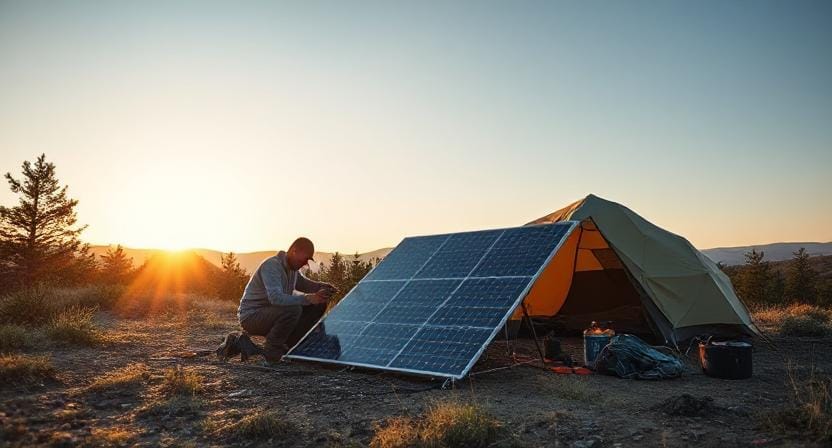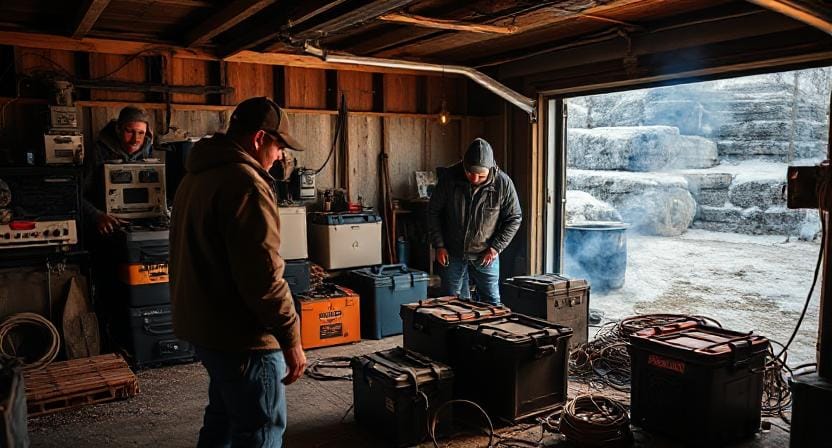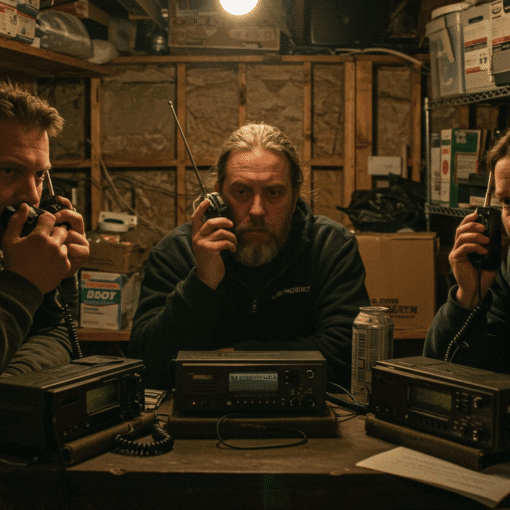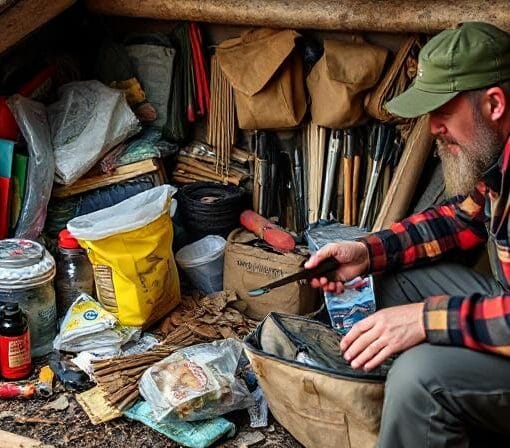In a world where things don’t always go as planned, planning for long-term survival typically requires thinking about where you’ll get your energy.
Having a lot of energy sources on hand can make a big difference in rough times, whether you need them for cooking, heating, or powering important electronics. I’ve learnt that being ready is not only wise, but also necessary from my own experiences and outdoor adventures.
Top Takeaways and Key Concepts
- Calculate your energy needs before storing fuel to avoid shortages during emergencies.
- Stock multiple fuel types like propane, firewood, and batteries to increase flexibility.
- Add renewable energy sources like solar panels or small wind turbines for long-term reliability.
- Store each fuel type safely to prevent leaks, rot, or damage.
- Review and update your energy plan regularly to prepare for changing needs or situations.
Summary of This Article
This article highlights the importance of planning for long-term energy needs during emergencies or survival situations. It emphasizes assessing how much energy you’ll require for essentials like cooking, heating, and powering devices. The article explores different fuel options—such as propane, firewood, and batteries—along with renewable choices like solar and wind energy for sustainable backup power. It also stresses the importance of proper storage to keep fuel safe and usable, as well as staying proactive and prepared. The overall message encourages diversifying energy sources and staying ready so unexpected situations never leave you powerless.
Video Version of this Article
Please Note: This post may contain affiliate links. If you click one of them, we may receive a commission at no extra cost to you. As an Amazon Associate, I earn from qualifying purchases.

Figuring Out How Much Energy You Need
 Before you start stockpiling gasoline, it’s important to know just how much energy you need. What are you going to do with power? Cooking? What is heating? Devices that charge?
Before you start stockpiling gasoline, it’s important to know just how much energy you need. What are you going to do with power? Cooking? What is heating? Devices that charge?
I recall that one time we were camping and our portable stove ran out of gas. We had to eat cold food for two days! That event taught me how vital it is to think about what I need before I buy a lot of things.
Think about how many people live in your house and how much energy each individual needs. If you plan to cook three meals a day for a family of four, for instance, you’ll need more fuel than someone who only cooks once in a while.
You may make smart choices about what kinds of fuel will work best for you by looking at how you use them and what kinds of emergencies might come up.
Different Kinds Of Fuel Sources
There are a number of ways to stockpile fuel for long-term survival. Each has its pros and cons, depending on how easy it is to find and store.
1. Propane
Propane is a great choice for both cooking and heating because it is flexible and works well. People often use it in outdoor grills, but it may also power heaters and camp stoves. When stored correctly, propane tanks have a surprisingly long shelf life! Just make sure they are stored in a cool, dry spot that doesn’t get direct sunlight.
2. Wood for burning
Firewood is a great alternative for people who like to do things the old-fashioned way. It gives off heat and can be used to cook over an open flame or in a wood-burning stove. When I slept in a cabin far away from other people, nothing felt better than cuddling up by the fire after gathering wood outside.
Choose seasoned wood since it burns hotter and makes less smoke than green wood (freshly cut). Putting firewood on the ground helps keep it dry and stops it from rotting, which is vital when you need it.
3. Batteries
Batteries aren’t a typical fuel source like propane or firewood, but they are very important for keeping tiny electronics running during power outages. Buying rechargeable batteries and solar chargers can start a cycle that makes sure you always have some power accessible.
During a surprise blackout while camping, I had to rely on battery-powered lanterns. They saved my life! Don’t forget to keep spare batteries in a safe place; they too have expiration dates!
Choices for Renewable Energy

As we think about the future of preparation, green energy options are becoming more and more important. Imagine using nature’s power without having to depend on limited resources!
Power From The Sun
Solar panels are easier to get than ever before. They let you make electricity from sunlight even when other sources fail! They cost money up front, but they pay off rapidly by making us less dependent on fossil fuels over time.
Portable solar chargers fit wonderfully in bug-out bags and RVs, which is interesting because they provide light wherever you go! On my previous road trip through national parks, I was able to keep my phone charged without having campground connections thanks to solar chargers.
Wind Energy
If you reside in a place where it is windy or plan to stay there for a long time, modest wind turbines can be a good alternative for you. They might take more work to set up at first than solar panels, but the return could be worth it just because of where they are!
Ways to Store
Once you’ve chosen the appropriate fuels for your purposes, it’s very important to store them correctly. Each type has its own set of rules that must be followed to make sure it lasts:
– Propane tanks should always be kept upright in areas with good air flow.
– Cover stacks of firewood with tarps to keep them dry.
– Keep batteries cool, but not freezing, and away from metal things that could create short circuits.
If you take these steps seriously now, you’ll be glad you did when everything goes smoothly during emergencies!
Preparing Today for Tomorrow’s Needs

You know, preparing to be ready for a large storm is a lot like accumulating energy supplies. It’s not enough to just stuff things into your garage or shed. It’s more about being safe and comfortable, knowing you have everything you need when things get a little crazy outside.
Take a moment to think about it. We can plan better when we know how much energy we regularly use for things like cooking, heating, and powering our devices. It’s all about using what we have wisely. It’s also very helpful if we change up the kinds of fuel we use. Some solar panels, some batteries, or even just some good old-fashioned candles can work.
It feels good to be ready, doesn’t it? Like having an umbrella when it’s raining. We don’t want to be surprised. So let’s work on this as a team! We can figure out what works best for each of us if we talk and share ideas.
Everything is easier when you stay ahead of the game. If we’re ready for anything unexpected to happen, like a power outage, it won’t be as scary. Even when it’s dark outside, we’ll still shine brilliantly!
I sometimes think about how good it is to have choices. Some people might enjoy one manner of storing energy more than another. That’s fine! Everyone has a different way of doing things.
It feels nice to be in charge of our own futures, doesn’t it? It gives us so much piece of mind to know that we’re doing something to keep ourselves and our families safe.
So let’s keep talking about these things over coffee! In this wild world, sharing tips and tactics might help us all feel safer and more connected.
Frequently Asked Questions
1. How do I figure out how much energy my family needs for emergencies?
Start by listing what you’ll need energy for—cooking, heating, lighting, or charging devices. Then estimate daily usage based on the number of people in your home and how often each item will be used. This helps you decide how much fuel or alternative energy you should store.
2. What is the best type of fuel to store for survival situations?
There is no single best fuel—propane, firewood, and batteries each serve different needs. Propane is great for cooking and heating, firewood is ideal for long-term heat, and batteries keep electronics running. The smartest plan is to store a mix of fuel types for flexibility.
3. Is propane safe to store long-term?
Yes, propane stores well long-term when handled properly. Always keep tanks upright in a well-ventilated area away from heat sources and direct sunlight. Check tanks regularly for rust or leaks to maintain safety.
4. Why is seasoned firewood better than freshly cut wood?
Seasoned firewood has been dried over time, so it burns hotter, cleaner, and with less smoke than freshly cut wood. Green wood contains moisture that makes it harder to burn and produces more smoke, which can be dangerous and inefficient in survival situations.
5. Are batteries really necessary if I have fuel like propane and wood?
Absolutely. Batteries power flashlights, radios, medical devices, and emergency tools. Rechargeable batteries paired with solar chargers give you access to electricity even when traditional fuel runs out.
6. Are solar panels worth the investment for emergency preparedness?
Yes, solar panels provide renewable energy without relying on stored fuel. They are especially helpful for long-term outages and remote living. Portable solar panels are affordable and perfect for charging essential devices during emergencies.
7. How should I store different types of fuel to keep them safe and usable?
Each fuel type has its own storage needs—propane must be stored upright outdoors, firewood should be stacked off the ground and covered, and batteries should be kept in a cool, dry place away from metal objects. Proper storage keeps your energy reliable when disaster strikes.
Suggested External Resources:
The Ultimate Guide to Emergency Preparedness
https://www.ready.gov/prepare
Emergency Preparedness & Response
https://www.cdc.gov/phpr/index.htm
Survival Skills: How To Build A Fire
https://www.outdoorlife.com/story/survival/how-to-build-a-fire/

Kevin Collier is a seasoned outdoor enthusiast and writer for Trekbug.com, specializing in outdoor adventures, survival strategies, and prepping insights. With a deep love for nature and a commitment to self-sufficiency, Kevin empowers readers to embrace the wilderness confidently. He shares valuable tips, practical techniques, and inspiring stories, helping both novice and experienced adventurers develop essential skills for surviving and thriving in the great outdoors.





